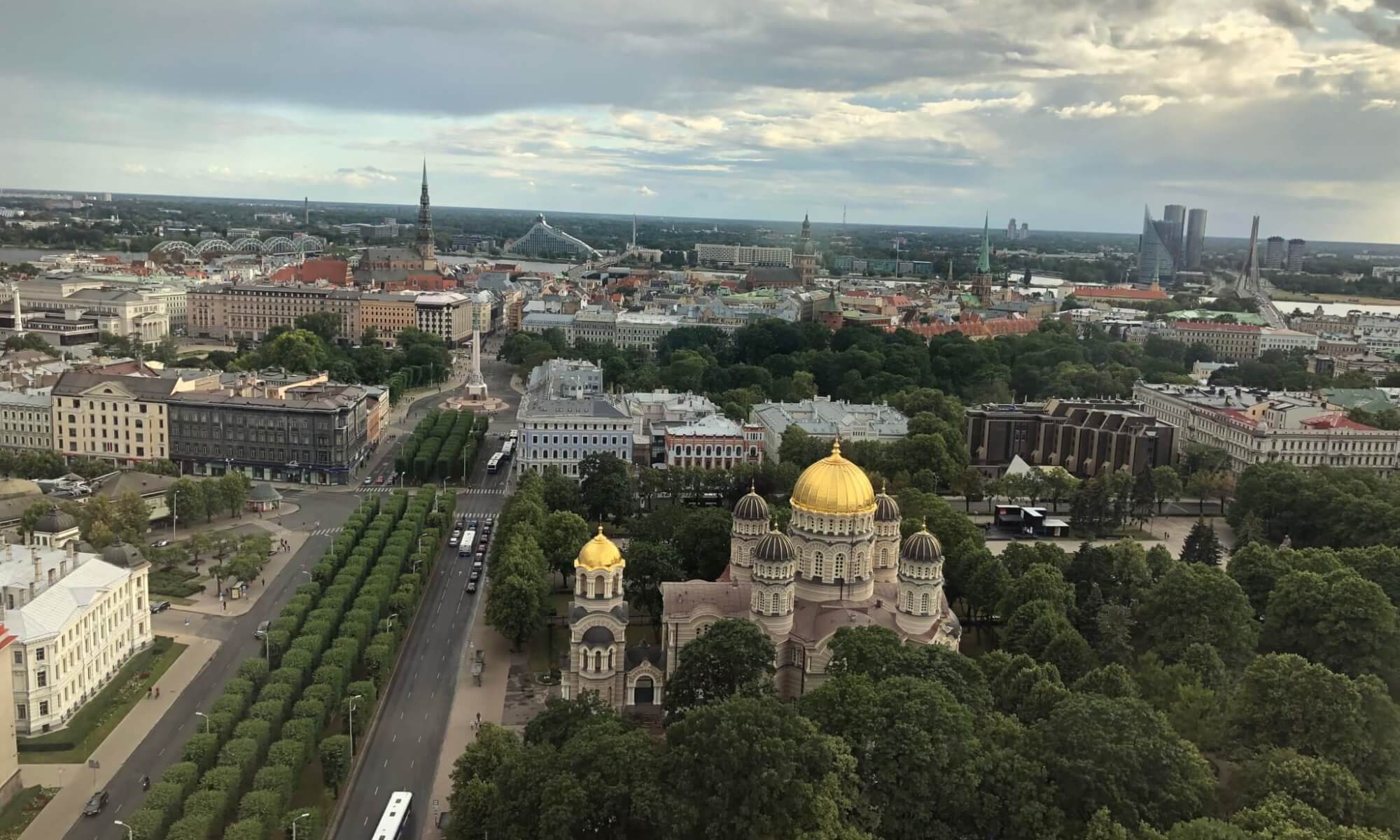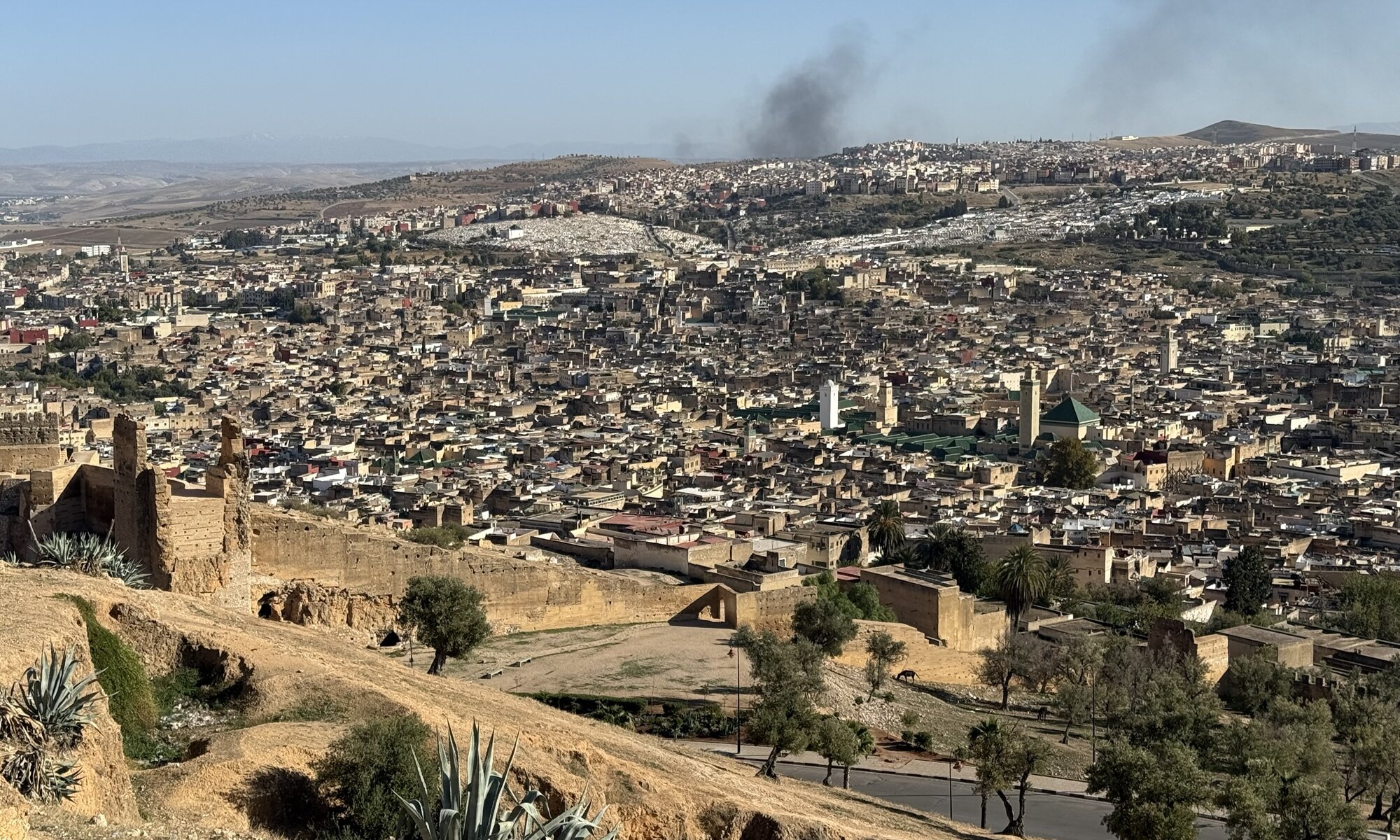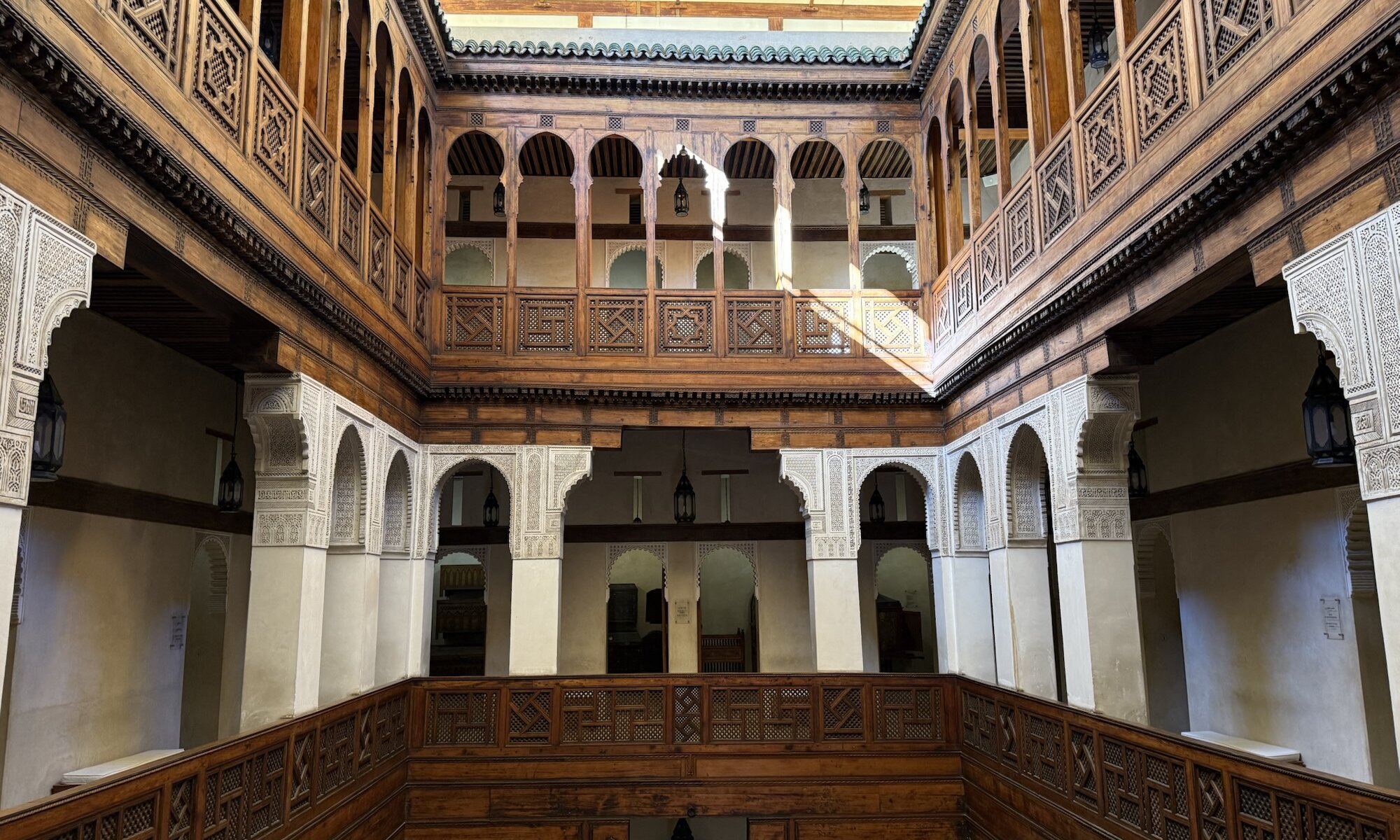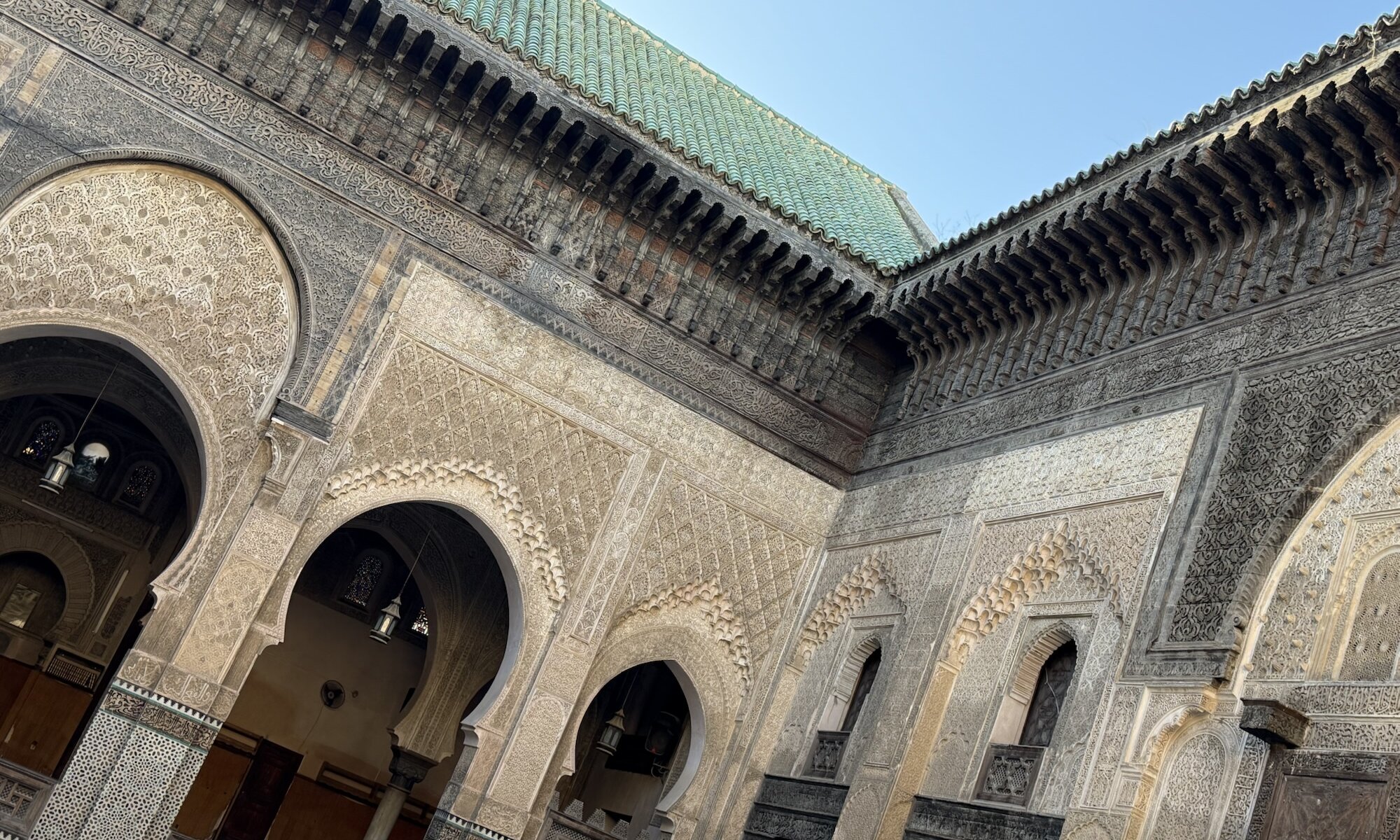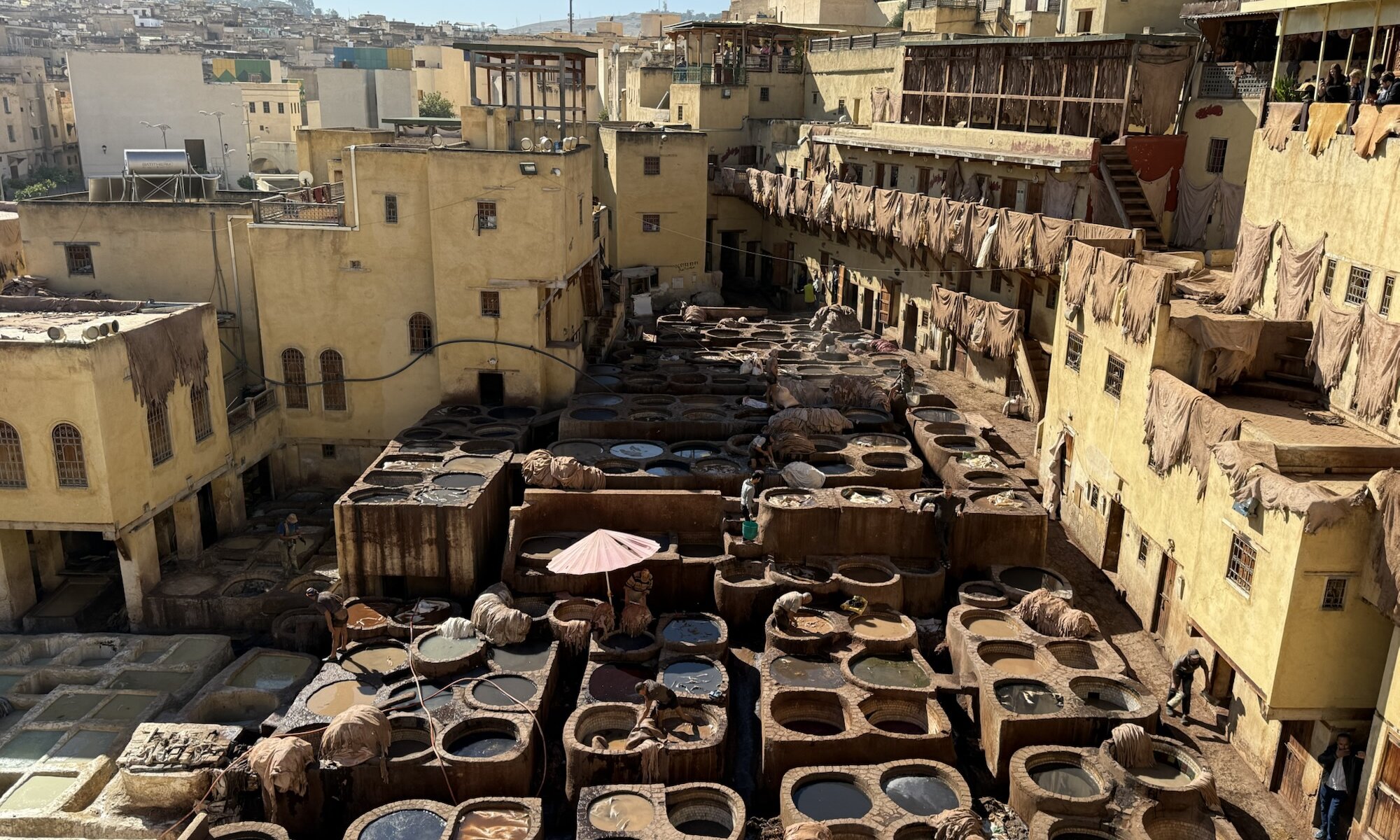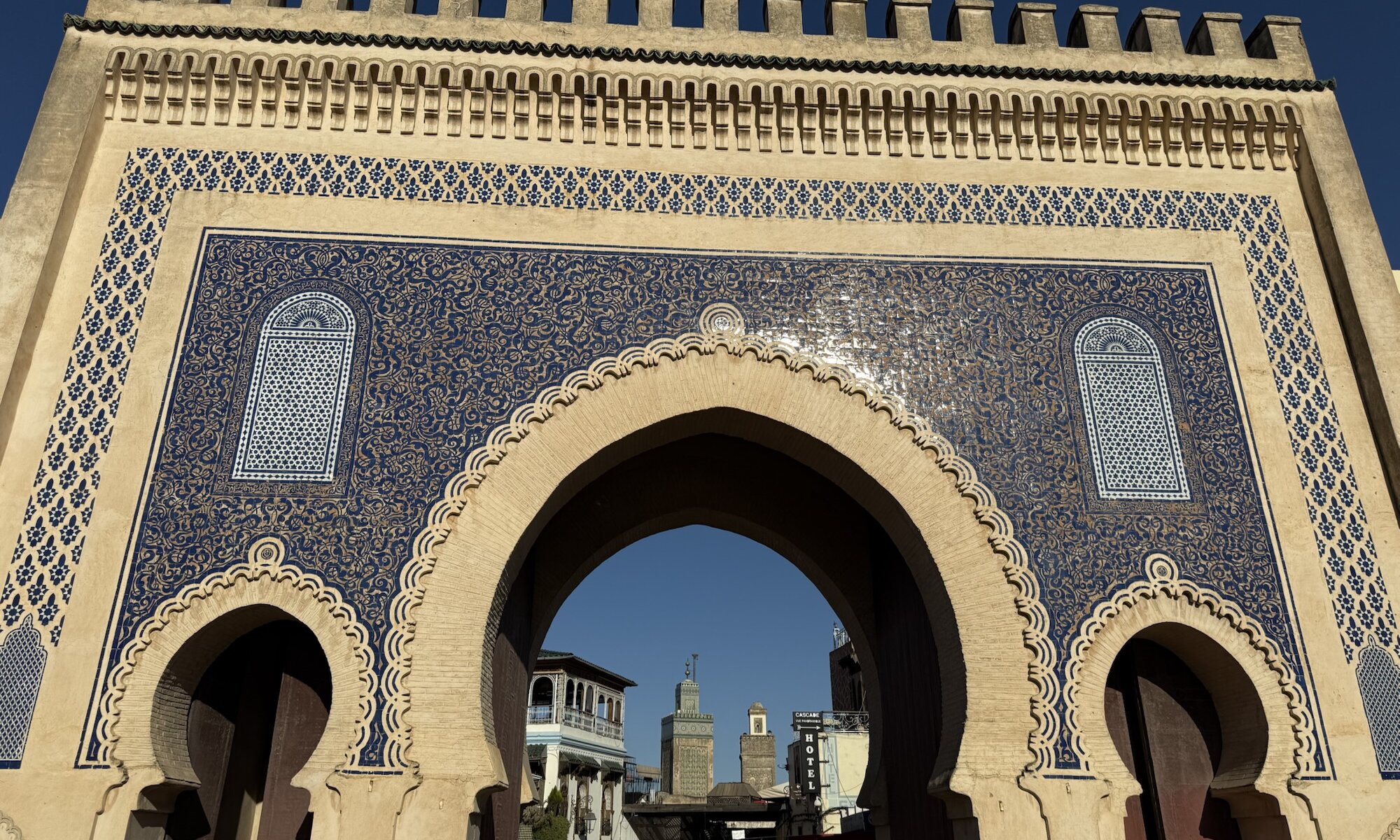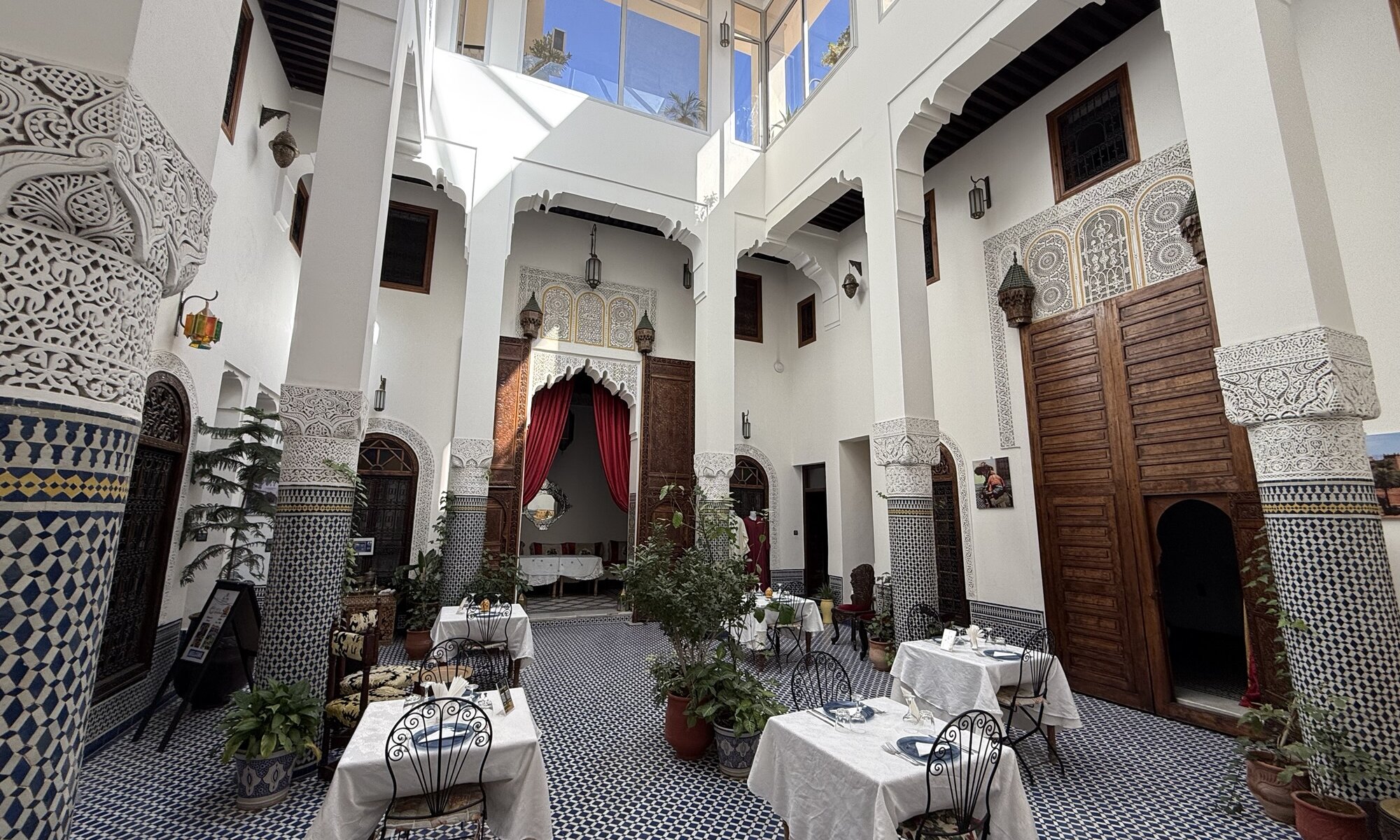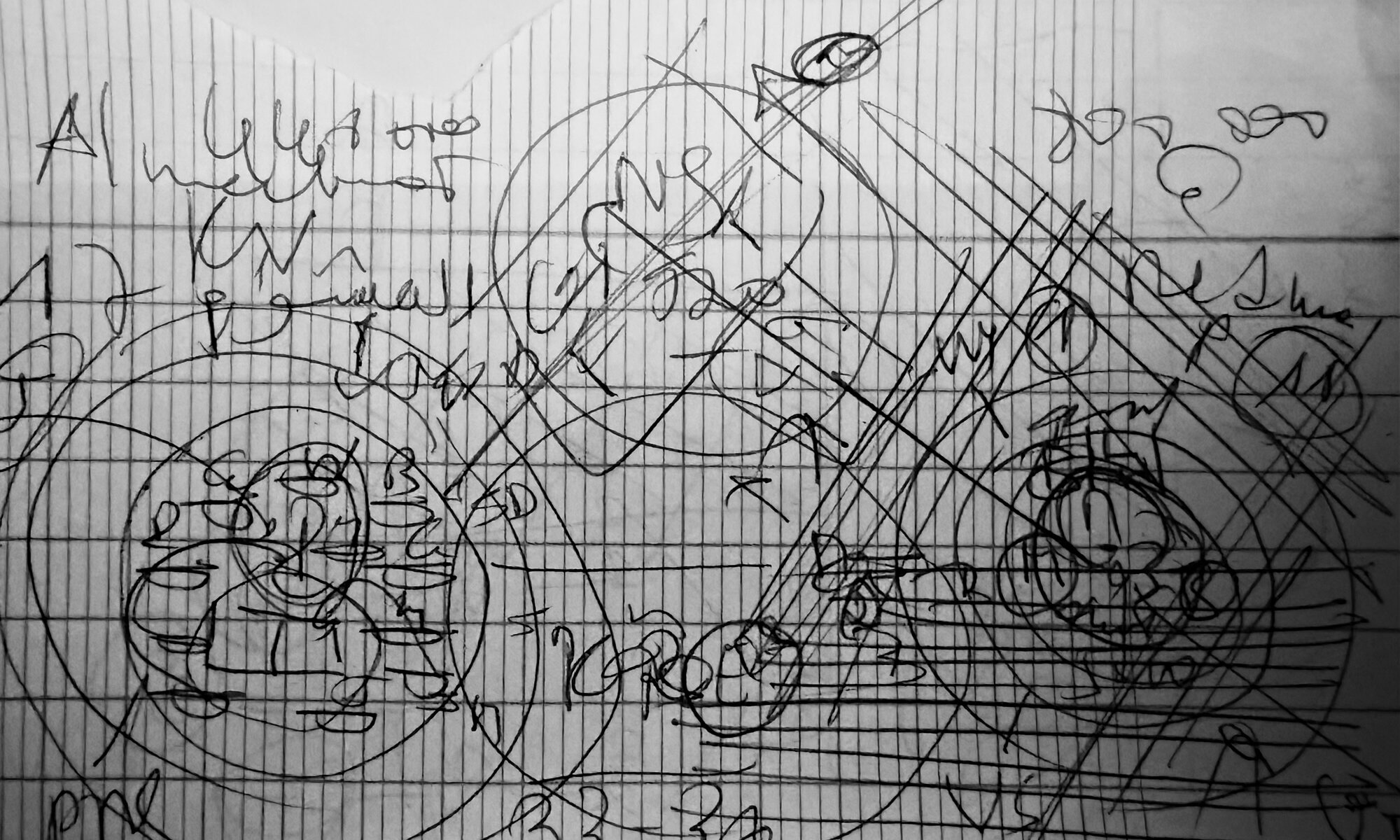Around Fès you can discover two fortresses that have been built in 1582 to oversee the city, the Borj Nord and Borj Sud. The northern fortress is today a weaponry museum and not far away you can discover two ruins: the tombeaux des Mérinides. What was once the royal necropolis of the Marinid dynasty is today mostly a viewpoint. From here you can have amazing views on the entire city distributed throughout the valley.
Continue reading “Tombeaux des Mérinides”Nejjarine
Finding the Musée Nejjarine des Arts et Métiers du Bois inside the maze that is constituted by the medina of Fès is quite a challenge. Once you’ve found the Place Nejjarine or Carpenters Square you can enjoy the atmosphere of this place, observe the craftsmen, discover the fondouk (a beautifully decorated fountain) and explore the nice museum. The Musée Nejjarine is an old caravansary, a wonderful building which exhibits the fine works of carpenters on several levels, from doors via chests to wooden weaving machines.
Continue reading “Nejjarine”Madrasa Bū ʿInānīya
The most important gate to the medina of Fès is the Bab Boujeloud, a gate with three arches visible from the vast Place Boujloud. It is decorated with blue and green tiles referring to the city (blue) and to Islam (green). Behind it, the Rue Talaa Kabira with its countless shops (and hidden restaurants) starts. The first important sight in the medina can be discovered already 130 meters behind the gate: the Medersa Bou Inania or Madrasa Bū ʿInānīya, a wonderful Islamic college. In fact, it is the biggest medersa of the city and also a mosque; both created around the year 1350 CE.
Continue reading “Madrasa Bū ʿInānīya”Tannery
The classic cover picture of guidebooks about Morocco is the Tannerie Chouara, hidden in the Medina of Fès. As it is a rather dirty and smelly craft, the tannery is located in the outer part of the old city close to the river. The skins of various animals are first bleached here in basins and later colored in the same way. If you arrive on the right day you can see many craftsmen working between multi-color water basins. The tannery is organized as a collective, many different people work in the same space and various shops surrounding it sell the products.
Continue reading “Tannery”Derb
The most immersive experience I had while being at Morocco was to explore the medina of Fès. A conglomerate of houses, feeling even more dense than the old town of Jerusalem. A city on multiple hills requiring you to climb up and down, filled with endless merchants and sights hidden in between to discover. Getting there is also an experience because you probably will get lost and your typical ways to get out will not work: in the narrow streets between high houses you’ll not have a good GPS signal and your navigation system will be unable to show you the right path.
Continue reading “Derb”Riad Nazha
The Medina of Fès is car-free and therefore having a Riad close to a city gate or road around is a pure necessity. A good option is the Riad Nazha located in the southern, lower part of the city center. The guesthouse is like a palace and it has a wonderful roof terrace with great views on the Borj Sud fortification. And like always in Morocco you can’t see the beauty of this place from the outside – once you’ve found the door after walking between high houses without decorations an unexpected world opens up.
Continue reading “Riad Nazha”Villes impériales
When people visit Morocco, they typically visit the four villes impériales: Fès, Meknès, Marrakech and Rabat. These four have been capital cities throughout time for different dynasties of rulers: Idrisids (Fès), Almoravids (Marrakech), Almohads (Marrakech), Marinids (Fès), Saadis (Marrakech, Fès) and Alaouites (Fès, Meknès, Rabat). They shaped their favorite cities, contributed new buildings to them and left their traces.
Continue reading “Villes impériales”